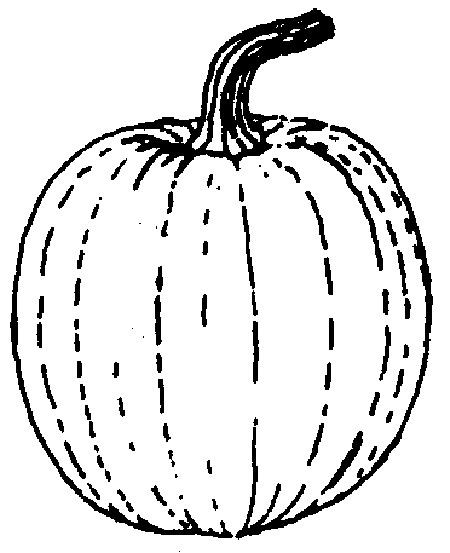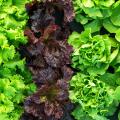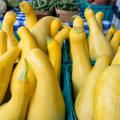Pumpkins
Pumpkins

Most garden pumpkins are planted for Halloween. Pumpkins planted in spring, when summer squash, cucumbers, and melons are planted, mature in midsummer, long before Halloween. If left in the garden, they rot. Therefore, they must be harvested and used or stored in a cool, dry place. Pumpkins for Halloween are best planted in late June and early July. They require 90 to 110 days from planting to harvest.
Most pumpkin varieties produce strong, running vines that require plenty of garden space. Some varieties are described as having short vines and are adapted to limited space.
Pumpkins cross-pollinate with summer squash, acorn squash, vegetable spaghetti, and small ornamental gourds if they are growing nearby. This is of no concern unless you plan to save seed for another year.
Jumbo pumpkins belong to a different squash group from Halloween pumpkins, and they cross-pollinate with many types of winter squash.
The tan pumpkins Kentucky Field and Dickinson Field belong to a third group and cross-pollinate with butternut squash.
All of this crossing results in some strange looking volunteer squash-pumpkins in the garden or compost pile the next year.
Pumpkin seeds saved from harvested pumpkins make a nice snack food when roasted. Some pumpkin varieties have seeds with no hulls. Never eat seeds that were purchased for planting because of insecticides and fungicides used as seed treatments.
Problems in growing pumpkins are cucumber beetles, squash bugs, pickleworms, squash vine borers, and powdery and downy mildews.
Varieties
- Autumn Gold—hybrid; early; 7 to 10 pounds; fruit begin turning gold at an immature stage; AAS 1987.
- Big Max—50 to 100 pounds; fairly round; pinkish orange; rough.
- Connecticut Field—20 pounds or more; fairly round; deep yellow-orange; thin, hard shell; thick, coarse flesh.
- Cushaw—12 pounds; skin cream-white mottled with irregular green stripes; bulbous blossom end with medium-long curving neck; thick, sweet flesh.
- Jack Be Little—miniature pumpkin; 3 inches across, 2 inches high; not edible; for decoration only; small pumpkins last several months.
- Jack O’Lantern—10 pounds; medium orange; smooth, shallow ribs.
- Prizewinner—hybrid; traditional color and shape; up to twice as big as Big Max.
- Spirit—hybrid; 12-inch diameter; 10 to 15 pounds; deep oval; bright orange; semi-bush; AAS 1977.
- Spookie—small; average 6 pounds; dark orange; thick, fine-textured, sweet flesh.
- Triple Treat—6 to 8 pounds; round; thick flesh; seed with no hulls.
Publications
News
If you grow your own vegetables, you will likely see at least a few pesky insects that want to feed on your plants. Slugs are one of the pests you may be noticing now.
Did you know yellow squash is in the pumpkin family and are 95 percent water?
Tomatoes are a popular crop, both for commercial growers and home gardeners. Even the best tomato growers run into problems along the way! We put together a simple, easy-to-follow guide to help you spot a few of the most common tomato troubles gardeners see.




